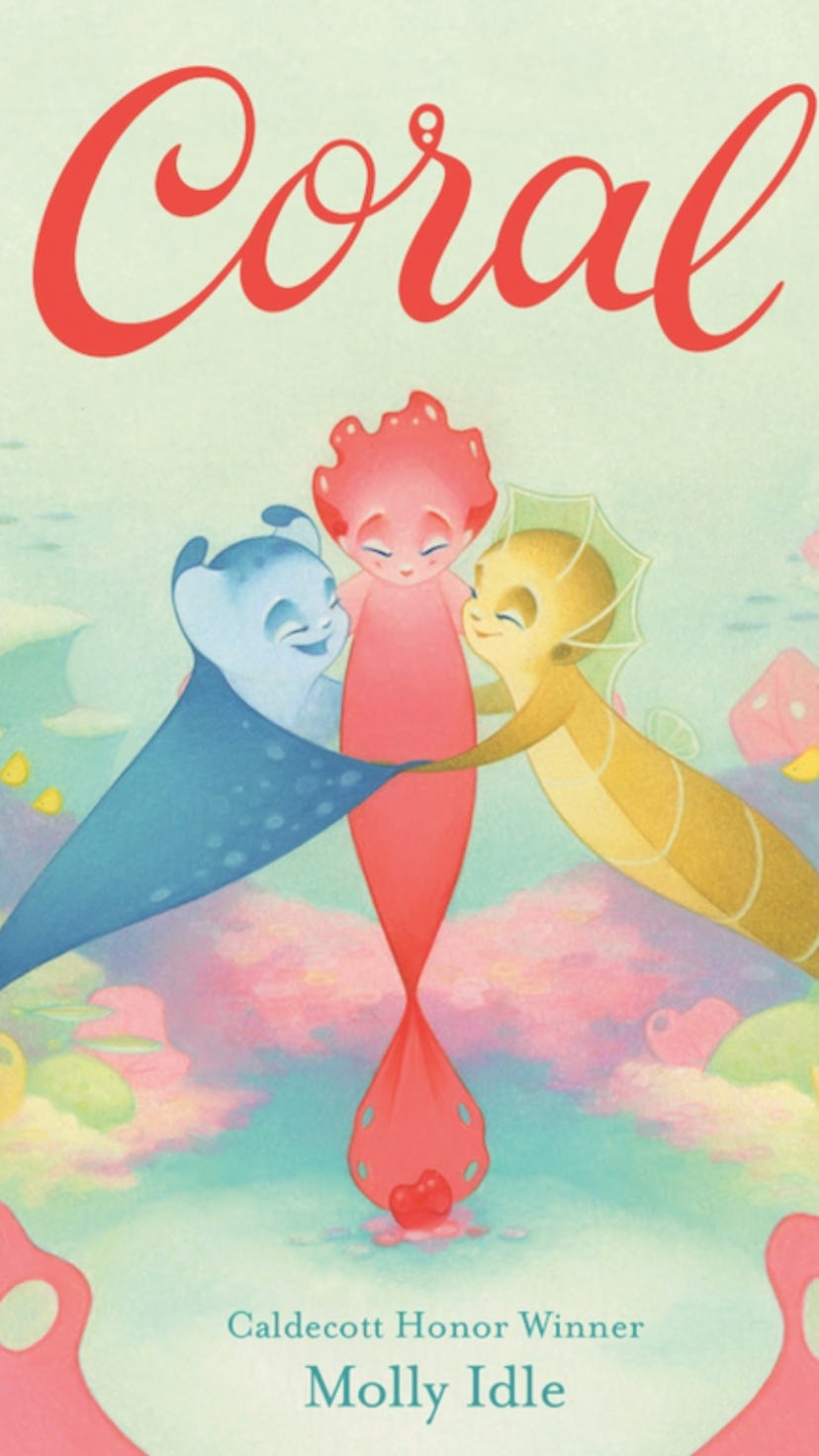Life

Author-Illustrator Molly Idle On How Having Children Changes The Way You Read
The mermaids my child loves so much spend a lot of time combing their hair and waving and accessorizing with jewels and combs. But there is another kind of mermaid you can just make out when you gaze down off a boat into water clouded by sunlight. They are there between the strands of kelp, along the ocean floor, and curled around the coral. These are the mermaids of Molly Idle, Caldecott-Honored children's author and illustrator, whose new book Coral is out May 19.
The hero of the book, Coral, finds a pale hollow in the reef, and wants to keep it for herself, pushing her friends out and away. Like so many of Idle's characters, her emotions glow on the page, and she finds a very gentle lesson in nature as her friends come back to give the reef color.
Idle began her career in animation with DreamWorks, before going back to drawing. Her style is calming and luminescent, built from layers of colored pencil. She talked with Romper about her artistic process, how we view headstrong young girls, and revisiting books from childhood as a mother.
From Poppy Louise to Pearl and Coral, the characters you draw are often difficult, stubborn girls — are they based on anyone? Yourself?
My mom says that when I was about 3 years old, and we disagreed about something, what I would say was, “Let’s cooperate.”
But what I meant was, “Let’s do it my way.”
So, I wouldn’t describe them as difficult or stubborn girls. I prefer to think of them as determined, strong-willed individuals. But perhaps that’s because I’d prefer to describe myself that way too.
Pearl and Coral touch on the idea of an ecosystem, is your work motivated by your own concerns about the planet?
Pearl finds that with the smallest of things — a single grain of sand — she can make a great difference.
Coral builds upon that idea, and considers not only what one (mer)person alone can create, but what (mer)people are able to create when they work together.
An understanding of both concepts is key to creating a future for all of us, and this world where we make our home.
Do you gravitate yourself toward books that take kids out of regular life?
The stories I most enjoyed as a young reader, and in fact, still enjoy most now, are tales that tell of things that exist regardless of time or place...
Friendship.
Loss.
Understanding.
Love.
Setting them somewhere apart from the day-to-day is a bit like taking a step back from a drawing. It helps me get them into focus, to take in the whole picture.
You work in pencil, which seems almost impossible to believe looking at your art. How long does it take to complete a spread, and what are you trying to do when you imagine each page?
With each image, I am trying to capture the story and the characters at a particular moment in time.
How long it takes me to create that moment depends upon the size and complexity of the image — it's anywhere from a day to a few weeks. I lightly layer the colors of different pencils, one atop another, atop another, and another, and another... until I’ve completely covered and saturated the paper. It is indeed a time-consuming process. But it’s also a calming and centering one. Almost meditative. I love it.
Did having kids change the way you viewed children's books?
Having kids changed the way I view everything! I had already decided to move from animation into illustration before becoming a parent. But in re-reading my favorite books to our boys, I definitely developed deeper connections to them (both the books and the boys)!
That’s one of the most magical things about good stories… we can reread them at different points throughout our lives and connect with them, and ourselves, in entirely new ways.
Reading Little Women with my mom when I was 8, I identified most with Amy, the young, aspiring artist. Rereading it myself at 18, I identified most with Jo, trying to make her own way in the world. Re-reading it again as a new mom — managing home and family life — I had a whole new respect for Meg. And if I were to read it now, with my boys in their teens, I have a sneaking suspicion that I would relate most to Marmee!
Do we lose our ability to see the magical in the ordinary, as children do? If so, what is the key to finding it again?
I don’t think that it’s possible to ever really lose that sense of wonder. But, sometimes, we can forget where we left it for a bit. How can we find it again? Simply asking that question is a wonderful way to start.
And the question itself is the answer!
Questioning, wondering, pondering, daydreaming...
What hard and fast rule about children's books have you been able to break?
One of my favorite things about making children’s books is that there aren’t hard and fast rules! Each project, each page, has the potential to be something entirely new. I’m fortunate enough to work with a team of folks who not only encourage me to grow creatively, but who encourage me to push them to do the same. Like Coral and her friends upon the reef, we’re at our best when we work together.
Coral is out May 19 from Little, Brown, Books for Young Readers.
This article was originally published on